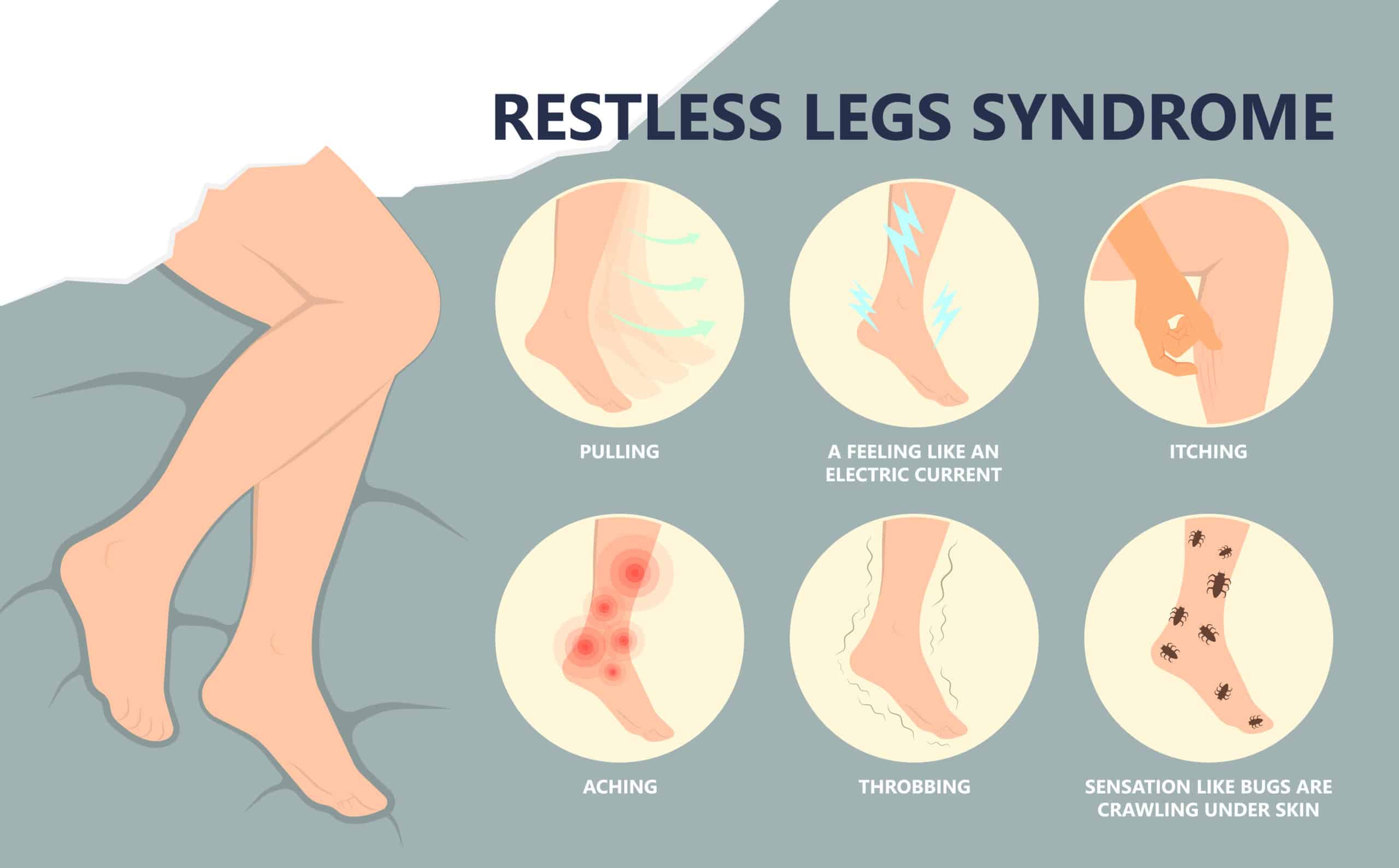Restless Leg Syndrome
Restless legs syndrome (RLS) is a disorder of the part of the nervous system that affects the legs and causes an urge to move them. Because it usually interferes with sleep, it also is considered a sleep disorder.
People with restless legs syndrome have uncomfortable sensations in their legs (and sometimes arms or other parts of the body) and an irresistible urge to move their legs to relieve the sensations. The sensations are difficult to describe: they are an uncomfortable, “itchy,” “pins and needles,” or “creepy crawly” feeling in the legs. The sensations are usually worse at rest, especially when lying or sitting. The sensations can lead to sleep deprivation and stress.

The severity of RLS symptoms ranges from mild to intolerable. Symptoms can come and go and severity can also vary. The symptoms are generally worse in the evening and at night and less severe in the morning. For some people, symptoms may cause severe nightly sleep disruption that can significantly impair a person’s quality of life.
Who Gets Restless Legs Syndrome?
Restless legs syndrome may affect up to 10% of the U.S. population. It affects both sexes but is more common in women and may begin at any age, even in young children. Most people who are affected severely are middle-aged or older.
RLS is often unrecognized or misdiagnosed. In many people it is not diagnosed until 10 to 20 years after symptoms begin. Once correctly diagnosed, RLS can often be treated successfully.

Causes of Restless Legs Syndrome
In most cases, doctors do not know the cause of restless leg syndrome; however, they suspect that genes play a role. About half of people with RLS also have a family member with the condition.
Other factors associated with the development or worsening of restless legs syndrome include:
Chronic diseases. Certain chronic diseases and medical conditions, including iron deficiency, Parkinson’s disease, kidney failure, diabetes, and peripheral neuropathy often include symptoms of RLS. Treating these conditions often gives some relief from restless legs symptoms.
Medications. Some types of medications, including anti-nausea drugs, antipsychotic drugs, some antidepressants, and cold and allergy medications containing antihistamines may worsen symptoms.
Pregnancy. Some women experience RLS during pregnancy, especially in the last trimester. Symptoms usually go away within a month after delivery.
Other factors, including alcohol use and sleep deprivation, may trigger symptoms or make them worse. Improving sleep or eliminating alcohol use in these cases may relieve symptoms.
Highly Recommended
“Good. He recommended the course of action that I thought he would but also respective of the fact that several approaches can be taken and he explained the differences and expected results. Also understand more about my feet and why the pronation, etc.and effects from it.”
Read More Reviews
Diagnosis of Restless Legs Syndrome
There is no medical test to diagnose restless legs syndrome; however, doctors may use blood tests and other exams to rule out other conditions. The diagnosis of restless legs syndrome is based on a patient’s symptoms and answers to questions concerning family history of similar symptoms, medication use, the presence of other symptoms or medical conditions, or problems with daytime sleepiness.
Restless Leg Syndrome Treatment Cost
The total cost can vary depending on the type of treatment used, the diagnostic techniques employed, and the additional test and exams conducted. During your consultation, our experienced professionals will discuss the potential costs and help you choose the best treatment options to achieve your desired results.
Schedule a Consultation
Find out more about treating restless leg syndrome in Artesia, Rancho Cucamonga, or any of our other locations – contact us today and schedule your consultation. Dr. Shawn Rabbani, a skilled podiatric specialist with years of experience.
Related Treatments




